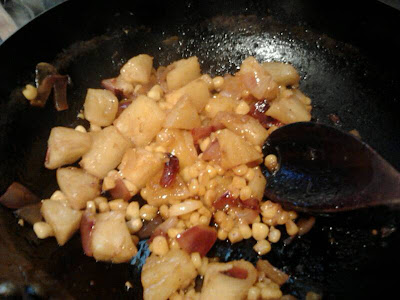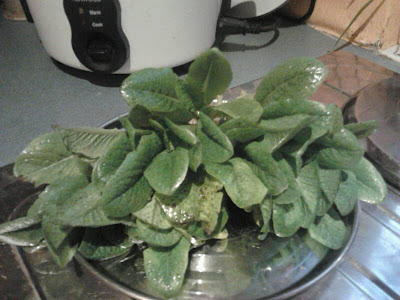As a child my father had chickens and we would always save peelings to mix in a mash for their feed. Grown up and vegan, now the compost and worms get the good stuff but rather than overwhelm them at a time of year when both worms and compost are sluggish I've opted to save my peelings to make wonderful stock.
Its as simple as putting it all in a pan and boiling down with a bit of water and salt. The stock pictured was made from a pile of artichoke peelings, carrot, parsnip and sprouts with the odd onion skin that fell in.
Boil away your stock until its has a good colour and a good infusion then strain and leave to cool.
You can use in anything that requires it but heres for some tasty mung beans I made to share with friends:
Tasty Winter Mung Beans
1. I use whole green mung beans as they are more wholesome and are cheaper. If you want a creamy finish you can use split mung beans or mung dhal. I soaked about two cups of beans in about two pints of stock for about 8 hours.
2. In a pan heat some oil and toast off some mixed spices , a desertspoon of curry powder will do the trick or you can mix your own blend to taste.
3. Add your mung beans and stock and bring to boil.
4. After about twenty minutes the beans should be softening and you may need to add more liquid.
5. Toss in some creamed coconut, chopped coconut or coconut cream to add some flavour and any greens that wilt easily e.g spinach, lettuce or fenugreek.
6. Continue to cook to blend the flavours for another 5 to 10 mins.
7. Serve with rice, flat breads or as part of a tapas.
Published with Blogger-droid v1.7.2



